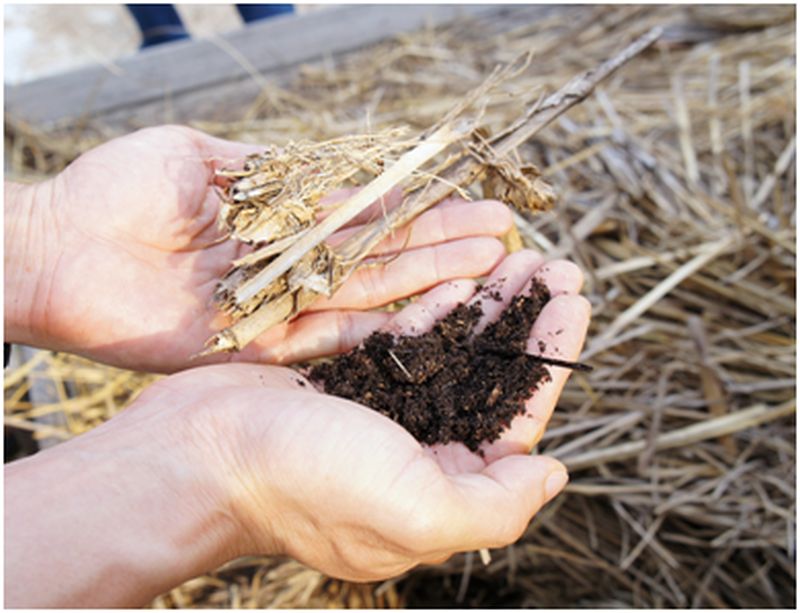Home composting is one of the most important ways we all can help the planet. The environmental benefit of recycling and minimizing waste can’t be overrated. Our landfills are reaching capacity at an unprecedented rate and we are running out of room. Remember, these landfills are not composting the material hidden inside. It will all still be there a hundred years from now. A significant percentage of landfill is composed of food waste. Anything each of us can do to lessen the impact of our household on the volume of waste will benefit the environment and especially the burden on the landfills.
Besides the benefit to the environment, compost is the best addition to your garden–and it’s free! If you have a garden, whether you plant vegetable seeds or flower seeds, or even if you only have a lawn, compost will improve your garden and lawn.
Constituents of Compost
Compost is made from any organic material. That being said, most people do not compost meat or dairy products. It’s not because it won’t decompose, but rather the scent of both can attract unwanted animals and pests. The compost is made by layering dried material, like autumn leaves and straw, with green material like fresh grass clippings, the garden plants when they finish producing or kitchen scraps. The smaller the pieces, the faster it will break down. The only other ingredient for making compost is water and air. The compost should be damp, and it needs to be “fluffed up” while it is “cooking.” This is done by turning the pile if you have a stationary bin or revolving the bin if you have a barrel type composter.
The finished compost looks like rich, dark dirt which, when spread in the garden, will enrich the soil. This means you will be able to produce healthy nutritious vegetables and healthy beautiful flowers. Many gardeners refer to their compost as black gold!
Why Composting?

If you have a garden, you will surely want to compost. As fall approaches and the garden winds down, you begin the fall cleanup. After all the squash and tomatoes are harvested, you are left with the vines and leaves from all your plants. Why not let them also provide for your family by turning them into rich compost for next season’s garden? The alternative is to add them to your trash, and that is not appropriate when there is a valuable alternative.
Instead, set up a compost bin outdoors. Either make a simple frame to contain the compost or purchase a barrel type composter. If you decide to make your own bin, check out YouTube for videos on how to build it. Also, the big box stores have plans, often for free. It is very simple and can be successfully constructed–even by a novice builder.
Once your outdoor bin is ready, start adding your yard waste and kitchen food scraps. It won’t be long before you have your own supply of black gold.
How to Store Food Scraps for Home Composting
You won’t want to dispose of your kitchen scraps frequently throughout the day, so here are some suggestions on how to store your food scraps until it’s convenient to add them to the outdoor compost.
· An Empty Coffee Can
Start indoor storage of scrap foods by repurposing an old coffee can with a lid. It’s free. The lid fits tightly to prevent leaking or unpleasant odors. It is lightweight and easy to carry. You can keep it under the sink until you are ready to empty the can into your outdoor compost bin. The coffee can will give you a chance to see how much compostable material your family makes in a day. That way, if you want a container that will stay on the counter where people will see it, you will know what size that container needs to be. Ideally, you will only have to empty your in-house storage once per day.
· A Compost Crock
This is a container that is meant to sit on your counter, so it should be attractive as well as functional. These can be ceramic, which come in many styles including cute farmhouse decorations. They also come in stainless steel for a sleeker contemporary look. Many have a built-in filter to prevent unpleasant odors from escaping.
· A Compost Bucket
The compost bucket is larger and will require more space. If you have a larger family, the bucket may work better for you than the crocks. Keep your bucket in the pantry or the hall leading out to the garden.
· A 5-Gallon Pail
These styles are larger and come with lids as well. They are great when you have high volumes of compostable material, like when you are doing a lot of canning and freezing.
· Plastic Bags

If you can’t get to the compost heap until the next day or so, put your scraps in a plastic bag and put it in the refrigerator. It slows the decomposition and holds the material until you can get it out to the compost bin. Another option is to freeze your scraps. If you live in the North, it is difficult to keep the outdoor compost bin from freezing. Any food scraps added to the pile will not decompose, but will probably attract unwanted pests. Storing the compost in your freezer until it thaws outside is a better alternative. If you don’t have room in your freezer, store your compost in tightly lidded containers in an unheated shed. An added benefit of freezing is that the material will break down more quickly once it has been frozen.
No matter how you store your compost, remember the effort you make now will improve your garden later and help you to grow the highest quality, nutritious food possible.
Article Submitted By Community Writer


